Members,
Kind of off topic but since we've had a long thread going on engine rebuilds, and between UK and USA I thought I'd share this; those of you interested in the general concept of engine rebuilding might be interested in the following.
The P51 Mustang fighter of WW-II was equipped with several variants of the Packard-Merlin V12 piston engine. This was a much improved version of the Rolls Royce Merlin and was built under license. Sorry friends across the pond. The rebuilders tell me that the Packard was so much better than the Rolls.
Average life in civil, not military use of this engine was 600 hours before a total rebuild. (in automotive terms, that's after about 36,000 miles at 60mph cruise); more often work was needed in half that time. Can you imagine having to do a valve job every 18,000 miles on your car?
Average life expectancy of a Merlin engine in combat was
7 hours. Yes, 7. Engines and parts were part of the supply chain pipeline--a big part.
After the war, many of these engines were relegated to hydroplane use which made airplane use look tame. They were trashed quickly and often; and many ended up in the Detroit River and on Lake Washington in Seattle (site of hydroplane races); many were left submerged until parts became scarce and they started fishing them up! You couldn't afford that engine in civil air use; they consumed about 65 GPH and were "high-performance". The P51 could fly for about 2.2 hours per fill; so that 7 hour life was nearly 3 missions.
Automotively speaking, if you need any specific part for an engine, you can ($$$ not withstanding) simply
have it made if you can't find it. Think custom cams, etc.
Aeronautically speaking, you can
ONLY use parts in a rebuild that are OEM and
have been certified by the FAA. So, if you are trying to rebuild a Merlin engine and you can't find the part, no matter how easy it may be to fabricate out of billet stock or what have you, it
can't be done if one expects to remain with an airworthiness certification. That's a big problem for the growing hobby among the super-rich of collecting air-worthy P51's.
Because of the above, the supply of Merlin parts was becoming pretty thin; and cylinder heads (aluminum) were getting trashed reqularly and becoming door stops; at least those that didn't make it into the scrap heap. Like we have for Mercedes engines, there are a small handful of engine rebuilders who specialize in Merlins. They are generally wild and eccentric people who have a lot of experience. You just can't go down to your local Packard dealer and buy a new cylinder head!
Enter Jack Roush, he of Roush Racing. He happens to be fabulously wealthy and a devotee of P51's.
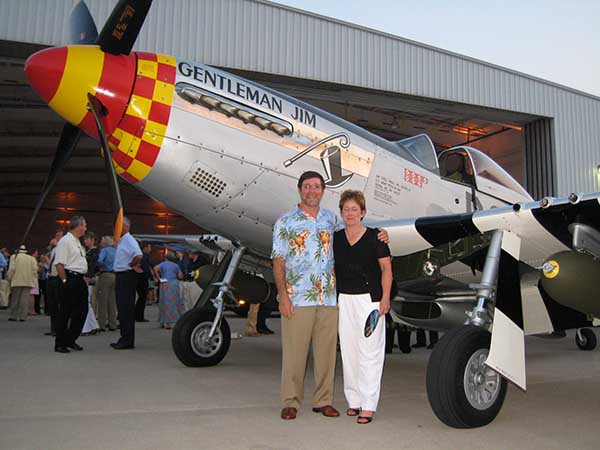
That's a photo of me, and my wife, in front of
one of Jack Roush's P51's this past August. Yes, he has more than one. This photo was taken shortly before dusk at Oakland Airport in Pontiac, Michigan. Jack was just about ready to get in and leave to take the plane back home to Willow Run--a short 15 minute flight. But he doesn't care to fly this old war bird in the dark so he had to high-tail it home. He's 65 years old.
He developed a means to "rebuild" trashed cylinder heads and by this method,
which he had certified by the FAA (a feat more expensive and time consuming than the fix itself) Roush Aviation has been able to make Merlin cylinder heads that have been door stops for decades into airworthy engines again. The concept is much like dental work. Grind out the bad metal, fill in with good aluminum on a proprietary ultrasonic table, and then re-machine back to specs before proceeding with the rebuild:
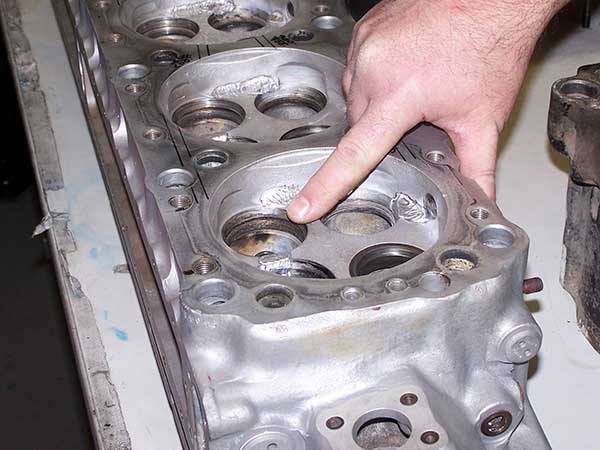
Here you can see the metal "fill" prior to re-machining.
Jack didn't stop there. He also improved the engine by taking something simple--the wiper cam lifter--and designing a roller cam lifter in its place. Again, it doesn't
sound that complex, but the shop foreman told me that the papers for certification were
three feet high! Can you
imagine the expense?
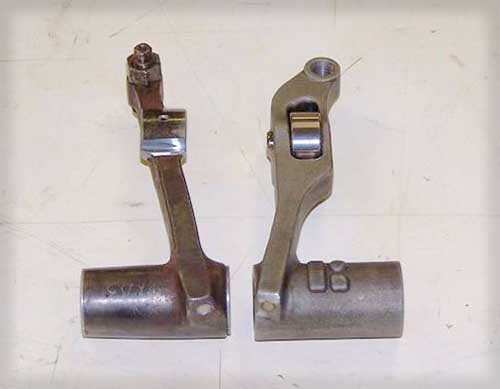
Here you can see the original wiper-style cam lifter on the left, and the new improved roller style (with Roush logo) on the right.
But, Mr. Roush didn't stop there. Why not improve the piston design from the 1930's? How about ceramic-coated pistons? Yes, remember, you have to develop the improvement, test it, and THEN go through the complexities of FAA certification which requires deep pockets:
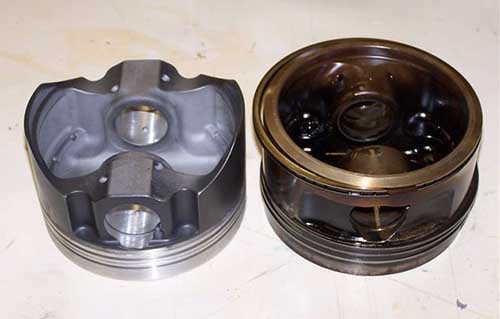
On the left is the new, smaller, lighter forged piston with ceramic coating versus the older original piston on the right. The ceramic coating makes them withstand heat better, and the light weight improves things too.
In addition to work on the improved Packard version, they also will do rebuilds on the Rolls-Royce version which of course, powered the Supermarine Spitfire, the stuff of legends in the Battle of Britain.
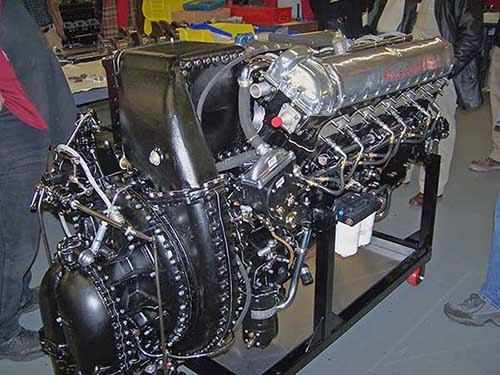
Every one of those nuts you see is castellated, and there is one continuous wire threaded through the nut and bolt; kind of an early lock-nut as it were. Yes it is as complex as it looks. This engine is complete and was ready to ship back to the customer when I took this photo at Roush in March of 2006. The large black assembly in the front of the engine is the supercharger.
In their own small way, every yahoo who goes to a Nascar race helps fund Roush Racing which of course, helps fund Roush which provided the funds to do this work. Yes, Billy Bob from North Carolina in his own way, is partially responsible for keeping P51's flying. It's a beautiful thing, amazing and true. The pictures tell the story. I should note that
my wife is one of those yahoos, attending the 2005 UAW-Ford 400 at Talladega.[:0]
Roush Aviation grew out of Roush Racing. Roush Racing moved from Michigan to North Carolina a few years back to be where all the OTHER teams were. Many people chose not to leave Michigan, so Jack put them to work with his other hobby, P51's. The result was just presented to you.
Engine rebuilds on the Merlin begin at $150,000. The line forms on the left.

Michael Salemi
1969 280SL
Signal Red 568G w/Black Leather (Restored)
President, International Stars Section
Mercedes-Benz Club of America